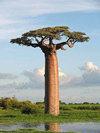New species and new status of Urophyllum Wall. (Rubiaceae) from Cambodia and Viêtnam
IF 0.6
4区 生物学
Q4 PLANT SCIENCES
引用次数: 1
Abstract
ABSTRACT Five new species of Urophyllum Wall. endemic to Cambodia and Viêtnam are herein described and illustrated, and U. annamense (Pierre ex Pit.) Yooprasert, Culham & Utteridge, stat. nov. is raised to species status. The new species are unique due to the morphological combination of indumentum, secondary venation, stipule shape and inflorescence structure as follows: U. bidoupense Yooprasert, Culham & Utteridge, sp. nov.: plant almost glabrous, secondary veins weakly brochidodromous, stipule glabrous, oblong-lanceolate; U. chinense subsp. latistipulum Yooprasert, Culham, Yahara & Utteridge, subsp. nov.: similar appearance to the U. bidoupense but differs with stipule ovate to elliptic, hairy along the midline; U. brochidodromum Yooprasert, Culham & Utteridge, sp. nov.: stem and branches hairy, adaxial leaf surface hairy on midrib and secondary veins, secondary veins conspicuously brochidodromous, stipule hairy, lanceolate; U. pulchristipulum Yooprasert, Culham & Utteridge, sp. nov.: plant glabrous, secondary veins festooned brochidodromous, stipule glabrous and subcordate, inflorescence sessile; U. pseudoschmidtii Yooprasert, Culham, Yahara, Tagane & Utteridge, sp. nov.: stem and branches hairy to subglabrous, secondary veins festooned brochidodromous, stipule sparsely to densely hairy, linear-lanceolate to oblong-lanceolate, pistillate flower with no staminodes. An identification key to Urophyllum species of Cambodia, Laos and Viêtnam is provided. Point occurrence maps are presented for each species, as well as provisional conservation assessments based on IUCN guidelines.标题尾叶科植物新种及新地位。(茜草科)来自柬埔寨和Viêtnam
尾叶科五新种。在此描述和说明了柬埔寨特有的植物和Viêtnam,以及U. annamense (Pierre ex Pit)。尤普拉西特,Culham & Utteridge, 11月被提升到物种地位。该新种由于毛被、次生脉、托叶形状和花序结构的形态组合而具有独特性:U. bidoupense Yooprasert, Culham & Utteridge, sp. nov.:植株几乎无毛,次脉弱枝状,托叶无毛,长圆状披针形;美国中国潜艇Culham, Yahara & Utteridge, subsp。11月:外观与双花花相似,但与托叶卵形至椭圆形不同,沿中线有毛;Culham & Utteridge, sp. nov.:茎和枝有毛,叶正面在中脉和次脉上有毛,次脉明显有毛,托叶有毛,披针形;U. pulchristipulum Yooprasert, Culham & Utteridge, sp. nov.:植株无毛,次脉被花状枝状花序,托叶无毛且近心形,花序无梗;假施米德花:茎和分枝有毛到近无毛,次脉被花状枝状,托叶疏生到密生毛,线状披针形到长圆状披针形,雌蕊花无雄蕊。提供了柬埔寨、老挝和Viêtnam尾门属植物的鉴定钥匙。每个物种的点分布图,以及基于IUCN指导方针的临时保护评估。
本文章由计算机程序翻译,如有差异,请以英文原文为准。
求助全文
约1分钟内获得全文
求助全文
来源期刊

Adansonia
生物-植物科学
CiteScore
1.30
自引率
12.50%
发文量
24
审稿时长
>12 weeks
期刊介绍:
Adansonia is a fast-track and peer-reviewed journal of plant biology, devoted to the inventory, analysis and interpretation of vascular plants biodiversity. It publishes original results, in French or English, of botanical research, particularly in systematics and related fields: morphology, anatomy, biology, ecology, phylogeny, biogeography, etc. All articles published in Adansonia are compliant with the different nomenclatural codes. A copyright assignment will be signed by the authors before publication.
 求助内容:
求助内容: 应助结果提醒方式:
应助结果提醒方式:


